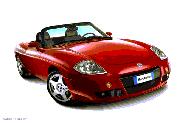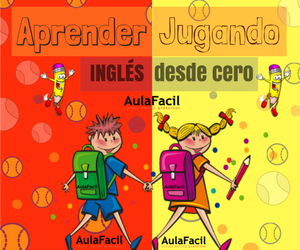Cars

Sonido
1.- Cars are made out of plastic and metal.
2.- Most cars have four wheels, a boot, windows, a steering wheel, etc.
3.- The boot is found at the back - there is a door to open it - and this is an empty space where people keep their personal objects, put their shopping, or don't use at all.
4.- Some cars have front and rear bumpers. Bumpers are useful when parking or in an accident, as they are made to protect you.
5.- On the front and back of the car there are license plates. These plates are unique and identify your car. If a car is stolen and the police find it, they can find out whose it is, and where it has come from by using the number on the license plate.
6.- On one side of the car there is the petrol tank. When the car runs out of petrol, the driver can go to a petrol station to fill it up. Cars can use unleaded, diesel or leaded petrol.
7.- On the front and back windscreen there are windscreen wipers, which can be used when it rains. Windscreen wipers clean the windscreens. They are usually replaced once a year.
8.- Inside most cars there are 5 seats, although some have 2 and others more than 5. Two at the front and three at the back. In England, the driver sits in the right hand seat and the passenger in the left hand seat.
9.- Above the driver there is a rear-view mirror. This mirror can be used to help the driver drive. In this mirror the driver can see the traffic behind.
10.- Most cars need an engine and a battery to work. The average car battery lasts 10 years.
11.- On the drivers side of the car there is a steering wheel, it is a large circle like a plate. This is used by the driver to steer the car right and left.
12.- To the left of the driver there are the gears. The average car has 5 gears. In non-automatic cars a clutch is used to change the gears.
13.- If the driver wants to go faster he/she will push on the accelerator. The accelerator increases the flow of petrol to the engine allowing the car to go faster.
14.- When the driver is driving the car he/she may sometimes see danger ahead or the need to stop suddenly - if this is the case the driver can push the break pedal down. In normal cases, the driver pushes both the break pedal and the clutch to avoid the car stalling.
Traducción
Coches
1.- Los coches están hechos de plástico y metal.
2.- La mayoría de los coches tienen cuatro ruedas, un maletero, ventanas, un volante, etc.
3.- El maletero se encuentra detrás (hay una puerta para abrirlo) y es un espacio vacío donde las personas guardan sus objetos personales, ponen su compra, o no lo utilizan para nada.
4.- Algunos coches tienen parachoques delanteros y traseros. Los parachoques son útiles cuando se aparca o en un accidente, ya que están hechos para protegerte.
5.- En la parte delantera y trasera del coche hay matrículas. Estas matrículas son únicas e identifican tu coche. Si un coche es robado y la policía lo encuentra, ellos pueden descubrir de quien es y de donde viene utilizando el número de la matrícula.
6.- En un lado del coche está el depósito de gasolina. Cuando el coche se queda sin gasolina el conductor puede ir a una gasolinera y llenarlo. Los coches pueden utilizar gasolina sin plomo, gasoil, o gasolina con plomo.
7.- En los parabrisas delantero y trasero hay limpiaparabrisas que se pueden utilizar cuando llueve. Los limpiaparabrisas limpian los parabrisas. Ellos son reemplazados normalmente una vez al año.
8.- En la mayoría de los coches hay 5 asientos, aunque algunos tienen 2 y otros más de 5. 2 delante y 3 detrás. En Inglaterra el conductor se sienta en el asiento de la derecha y el pasajero en el asiento de la izquierda.
9.- Encima del conductor hay un espejo retrovisor. El espejo se puede utilizar para ayudar al conductor a conducir. En el espejo el conductor puede ver el trafico detrás.
10.- La mayoría de los coches necesita un motor y una batería para funcionar. La batería estándar dura 10 años.
11.- En el lado del conductor del coche está el volante, es un círculo grande como un plato. Es utilizado por el conductor para guiar el coche a derecha e izquierda.
12.- A la izquierda del conductor están las marchas. El coche estándar tiene 5 marchas. En los coches que no son automáticos se utiliza un embrague para cambiar las marchas.
13.- Si el conductor quiere ir más rápido él o ella presionarán el acelerador. El acelerador incrementa el flujo de gasolina hacia el motor permitiendo al coche ir más rápido.
14.- Cuando el conductor está conduciendo el coche, a veces él o ella puede ver peligro delante o la necesidad de parar de pronto; si éste es el caso, el conductor puede presionar el pedal del freno. En situaciones normales el conductor presiona el pedal del freno y el embrague para evitar que el coche se cale.

